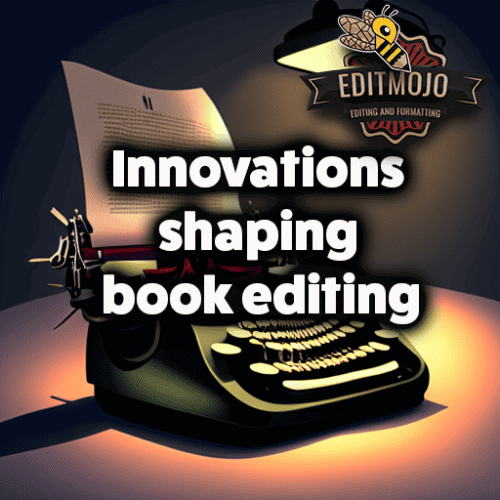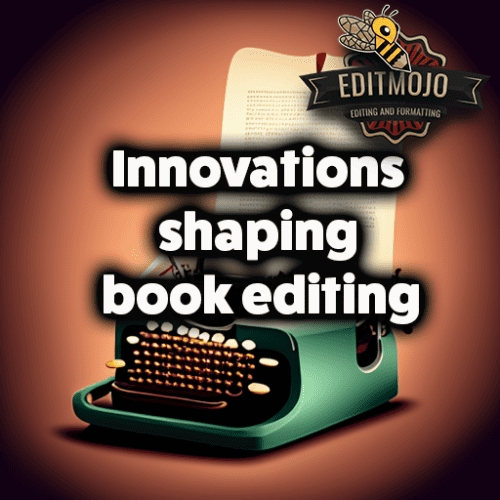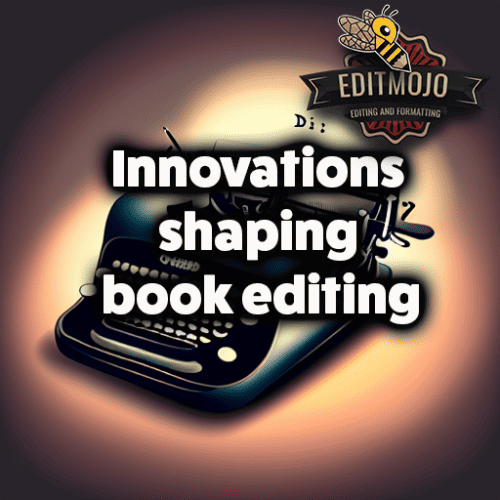Innovations shaping book editing
Innovations shaping book editing. When one holds a book in their hands, the countless hours spent by writers, editors, and publishers in perfecting each word, sentence, and paragraph often remain invisible. Book editing, a critical element in the publishing process, has evolved significantly over the years, particularly with the advent of modern technology. This article will explore the recent innovations shaping book editing and how they are revolutionizing the written word.
Key Takeaway Table (Innovations shaping book editing)
| Section | Key Takeaways |
|---|---|
| Traditional Vs Modern Editing | Traditional editing focused on human skill while modern editing utilizes digital tools and AI. |
| Technology in Book Editing | Digital tools and cloud technology have streamlined the editing process, enabling real-time collaboration. |
| Role of AI in Editing | AI is used in grammar correction, readability analysis, plagiarism detection, and potentially narrative analysis. |
| Crowdsourcing in Editing | Crowdsourcing allows community feedback on manuscripts but could lead to unprofessional or biased advice. |
| Self-Editing | Innovative tools aid self-editing but should supplement, not replace, professional editing. |
| Future of Book Editing | Potential future trends include VR/AR technologies, advanced AI analysis, and growth of freelance editing. |
Traditional Editing Vs Modern Editing: Understanding the Difference
Traditional editing methods held sway for decades, with human editors meticulously examining each manuscript for errors and making suggestions to improve the narrative flow and character development.
Understanding traditional editing methods
Traditionally, an editor’s role was much like that of a guide, working closely with authors to ensure their story resonated with readers. They focused on enhancing the author’s voice while ensuring accuracy and clarity. This process often involved multiple rounds of edits, ranging from substantive or developmental editing, to line editing and proofreading.
Modern editing methods
However, the 21st century ushered in a digital age that has redefined the book editing landscape. Digital tools and artificial intelligence now play a significant role in the editing process, reducing the time required and augmenting the editor’s capabilities.
Artificial intelligence, in particular, is making waves in the editing world, with sophisticated algorithms capable of spotting errors and making stylistic suggestions.
Influence of Technology in Book Editing
Technology has permeated every aspect of our lives, and book editing is no exception. The rise of digital tools and the increasing accessibility of cloud technology have dramatically changed how editors work.
The rise of digital tools and platforms for book editing
Online proofreading tools such as Grammarly and Hemingway have made it easier to identify and correct grammar and syntax errors, while digital style guides like The Chicago Manual of Style Online have replaced hefty physical volumes, providing quick answers to style questions at the click of a button.

The impact of cloud technology
The advent of cloud technology has made real-time collaboration a reality. Google Docs and Microsoft 365 allow multiple individuals to work on the same document simultaneously, regardless of geographical location. This technology has streamlined the editing process, enabling quicker turnarounds and more efficient workflows.
Role of Artificial Intelligence (AI) in Book Editing
AI’s role in book editing is multifaceted, extending beyond simple grammar and syntax checks.
AI-driven grammar and syntax correction tools
AI’s ability to learn and adapt enables it to handle more complex tasks. For example, advanced AI algorithms can now detect passive voice, wordy sentences, or repetitive phrasing and offer suggestions to improve clarity and readability.
AI in readability and style analysis
Moreover, AI tools can provide in-depth readability and style analysis, suggesting changes to enhance the overall reading experience. For instance, ProWritingAid not only flags grammar errors but also provides a detailed report on sentence length variation, overused words, and potential improvements in style and tone.
AI for plagiarism detection
AI has also played a significant role in plagiarism detection. Tools like Turnitin can compare a document with millions of other texts, highlighting any potential instances of plagiarism and thereby ensuring originality and integrity in the written word.
AI’s potential in understanding narrative structure and character development
Looking to the future, I believe that AI could play a role in understanding and enhancing narrative structure and character development. Imagine a tool that could understand plot progression and offer suggestions for creating suspense or foreshadowing events! While this is still a futuristic concept, given AI’s rapid advancements, it may not be a distant reality.

Crowdsource Editing and the Power of Community
In an age of interconnectedness, the power of community is evident in various fields, including book editing. Crowdsourced editing, a practice where a community of readers provides feedback on a manuscript, is on the rise.
Platforms like Wattpad and Inkitt have democratized book editing to a certain extent, enabling authors to receive feedback from potential readers worldwide. This community feedback can be invaluable, providing insights into reader preferences and highlighting areas for improvement. However, the practice has its drawbacks, including the risk of receiving unprofessional or biased advice.
Self-Editing: Empowering Authors with Innovative Tools
In the era of self-publishing, more authors are choosing to edit their work. Fortunately, numerous tools exist to aid this process. Apart from Grammarly and Hemingway, there are tools like AutoCrit that specifically cater to fiction writers, providing feedback on pacing, dialogue, and repetition.
However, while these tools are helpful, they should be used as supplements rather than replacements for professional editing. Nothing can replace the keen eye and nuanced understanding of a human editor.

The Future of Book Editing: Predictions and Possibilities
The innovations shaping book editing suggest an exciting future. We might see the integration of VR/AR technologies in editing, providing a more immersive experience for editors. Advanced AI could delve deeper into narrative analysis and character development, enhancing storytelling. As remote work continues to grow, so too will freelance and remote editing opportunities. The author-editor relationship may also evolve, becoming more collaborative and egalitarian.
The key to embracing these innovations is adaptation and a willingness to explore new methods and technologies. As we move into this new era of book editing, it is crucial to remember the importance of balancing technology with the irreplaceable human touch.
In the words of American writer and editor Sol Stein, “The best readers come to fiction to be made to feel, to be transported, to be immersed in a different reality.” As long as innovations in book editing continue to serve this purpose, we can look forward to more captivating and well-crafted stories in the years to come.
Top Five Questions and Answers Table (Innovations shaping book editing)
| Question | Answer |
|---|---|
| How has the process of book editing evolved? | The process has evolved from traditional human-focused editing to modern editing, utilizing AI and digital tools. |
| What role does AI play in book editing? | AI helps in grammar correction, readability analysis, plagiarism detection, and potentially narrative analysis. |
| What is crowdsourcing in book editing? | It’s a practice where a community of readers provide feedback on a manuscript, mainly enabled by online platforms. |
| How can authors self-edit their books? | Authors can use innovative digital tools for grammar checking, style analysis, and narrative feedback. However, self-editing should not replace professional editing. |
| What could be the future trends in book editing? | Future trends could include VR/AR technologies, advanced AI in narrative analysis, and growth of freelance and remote editing opportunities. |
